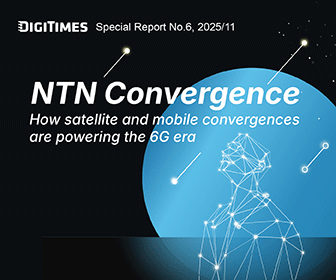In an insightful interview with DIGITIMES Asia, Julian Prower, Chief Operating Officer of Dun & Bradstreet (D&B) International on December 8, explored the profound implications of D&B's cutting-edge AI data analysis, unveiling a forecast that suggests an escalating probability of a supply chain disruption in the near future.
As global supply chains undergo unprecedented transformations due to geopolitical developments, D&B's advanced data analysis emerges as a pivotal tool, providing companies with crucial foresight into potential disruptions.
The probability of a natural disaster, trade sanctions, or shipping route disruption becomes an immediate concern for companies with extensive global supply networks. The geopolitical dynamics further amplify risks and create potential unprecedented challenges for businesses.
Predicting renewed supply chain disruption
Prower provided a deep dive into the data-driven insights highlighting a concerning trend. He gave the example of the spillover of the Israel-Hamas conflict, as major shipping lines are steering clear of the Suez Canal. As a result, ships are taking a longer alternative route, increasing both shipping costs and time.
The previous Suez Canal incident took over six months before supply chains returned to normal. Various economic research suggests that ongoing supply chain disruption has the potential to impact the global economy.
With the drought, shipping companies have paid a current total of US$235 million in 2023 to bypass the Panama Canal since only a limited number of ships can enter the waterway, according to ShippingWatch.
"This revelation underscores the critical importance for businesses to not only be aware of this looming challenge but also to proactively address potential disruptions in their supply chains," said Prower. "What many organizations have come to realize is, it's not just their direct supply chain that they need to care about, but their supplier's suppliers."
He delved into the lasting impact on global logistics and the interconnected nature of these disruptions, emphasizing the need for proactive measures in mitigating the repercussions of such incidents and illustrating how AI-driven data analysis can guide businesses in navigating these complex challenges.

Credit: D&B
From the Supply Chain Pressure Index that D&B has been monitoring over the years, Prower pointed out that supply chain disruptions are likely to become the norm in the future, and companies should take proactive measures to cope with the rapidly changing world.
Prower said D&B's commitment is to provide actionable insights, elucidating how AI algorithms analyze various data sources, including alternative signals. "The goal is to identify patterns and potential risks not discernible through traditional analyses. This advanced data analysis offers companies a forward-looking perspective that goes beyond hindsight, allowing them to enhance preparedness and resilience against potential supply chain risks," said Prower.
Supply chain shifts and vulnerabilities
As regionalization efforts and evolving trade policies continue to reshape the business landscape, new demands emerge for sustainable business operations.
The interconnectedness of businesses within supply chains and the influence of ESG considerations on strategic decisions, including supply chain localization, has become a focus of company operations. Prower also highlighted D&B's supportive role for organizations and shed light on the expanding scope of ESG assessments.
Dun & Bradstreet is aiding numerous businesses in improving visibility within their supplier networks through supply chain analytics, thereby minimizing risks and reducing costs.
"Many organizations are talking about the fact that procurement processes are taking longer. And the reason is because companies are more concerned to ensure both that they understand who they're dealing with, but also the companies they're talking to dealing with," Prower explained that the supply chain shift to India and Southeast Asia, or Mexico has been a challenge to companies which are migrating their production lines to countries they are not familiar with.
"We learned during the pandemic that very quickly some companies were not available to provide supplies because their suppliers were having challenges. And there was a knock-on effect. Now organizations also are looking to do more complete assessments on cyber security readiness of their supply chains."
Companies no longer focus on assessing their direct suppliers within the supply chain. Instead, there is a shift towards a more holistic approach that includes evaluating the entire cybersecurity landscape. This broader perspective recognizes that cyber risks can emanate from various sources beyond direct suppliers.
Enterprises face multifaceted challenges in modern procurement, where considerations extend beyond traditional supply chain issues to encompass the critical realm of cybersecurity and the imperative for strategic diversification and contingency planning, and it is why a comprehensive solution backed by AI become ever more pivotal, fortifying supply chains and enhancing overall business resilience.

Julian Prower. Credit: DIGITIMES




